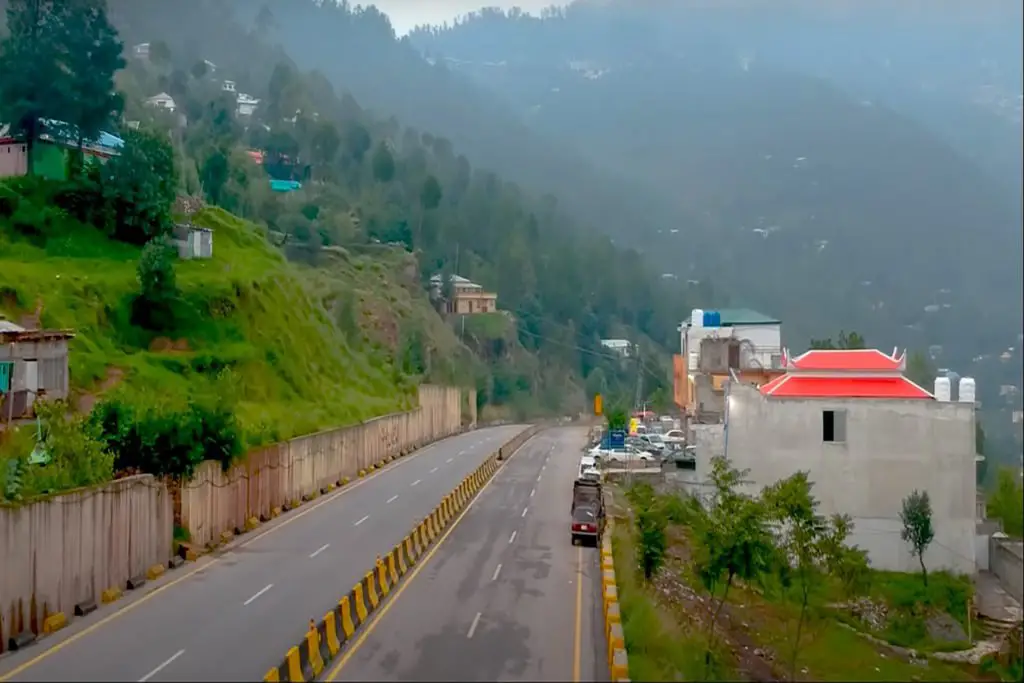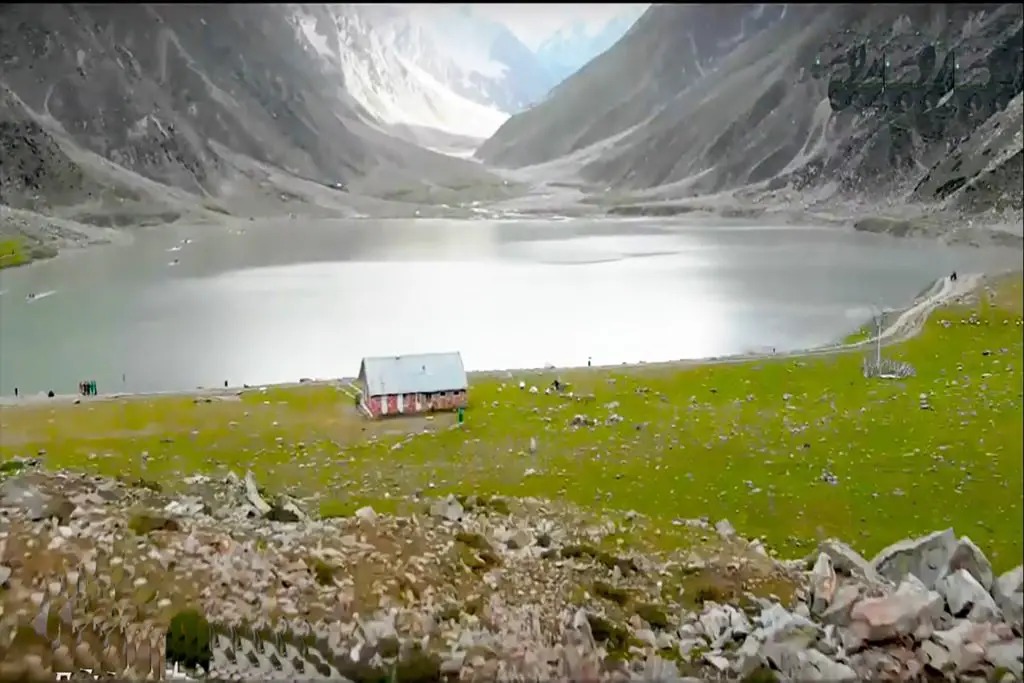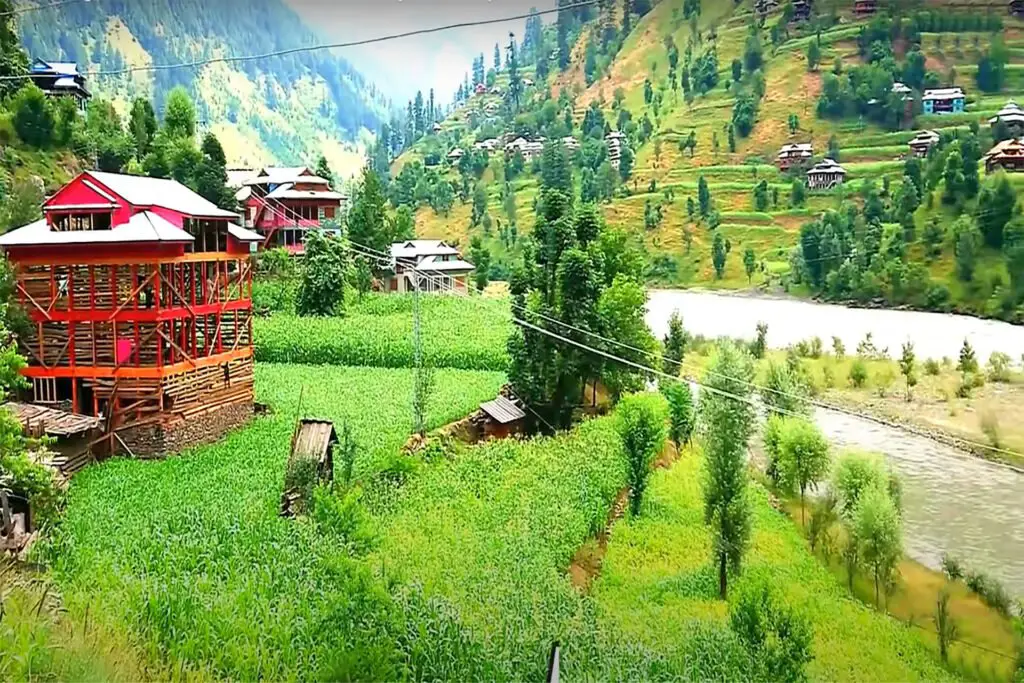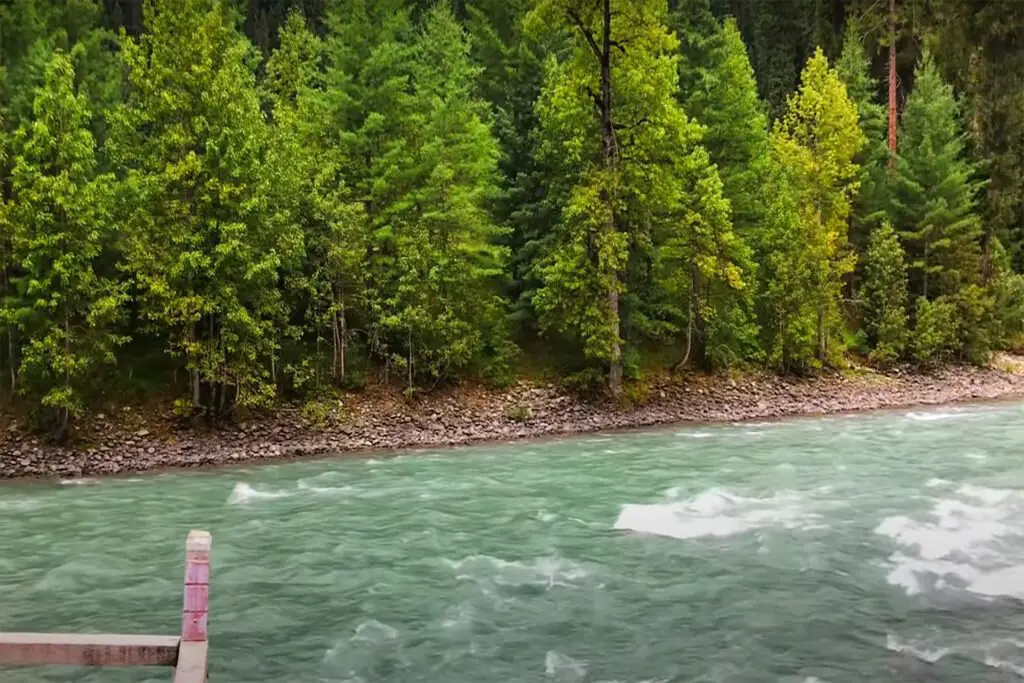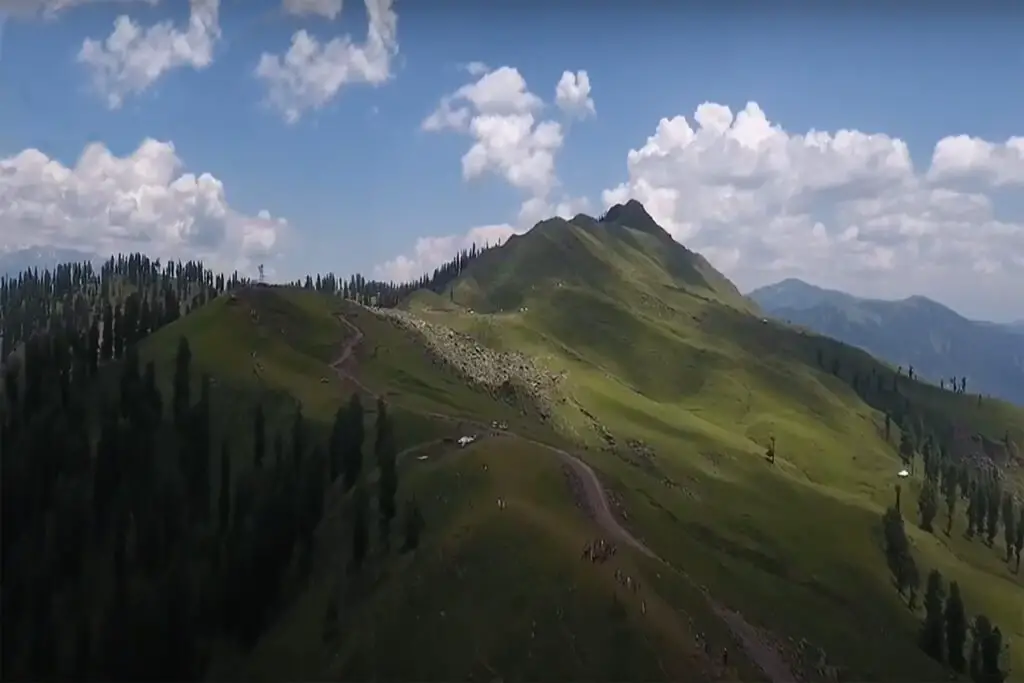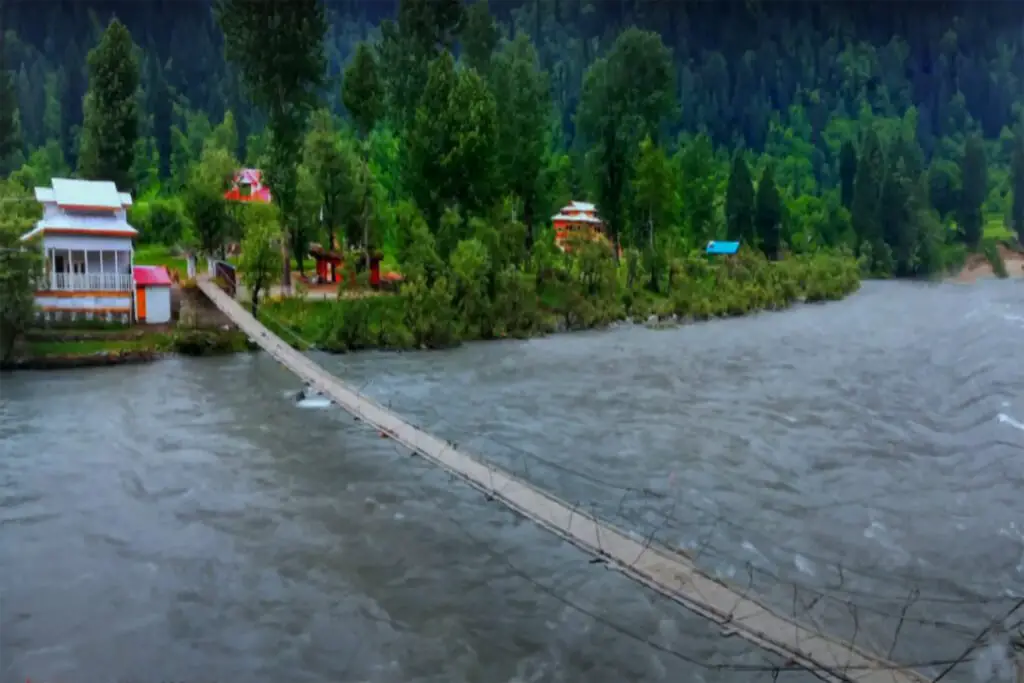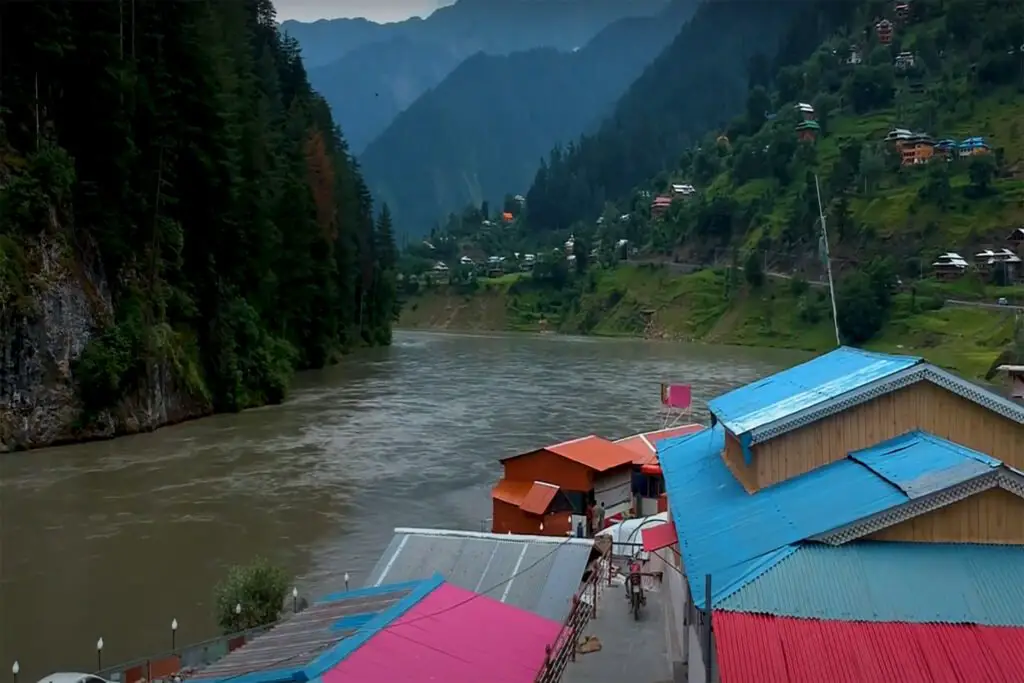Nathia Gali or Nathiagali is a hill station and mountain resort located in the Abbottabad region of Khyber Pakhtunkhwa, Pakistan. It is located in the center of the Galyat range, where there are numerous hill stations.
Nathia Gali hill station is known for its natural beauty, hiking trails, and pleasant climate, much cooler than any other area in Galyat because of its high altitude. It is located approximately 32 km (20 mi) from Murree and Abbottabad.
Nathia Gali History
During British rule, Nathia Gali, then part of the Abbottabad tehsil region of Hazara, served as the summer capital of the Great Commission (then) part of the Peshawar.
The village and Dunga Gali formed an area declared under the Punjab By-law, in 1891. The income of 1903-4 was Rs. 3,000 mainly deducted from rent, while the cost was Rs. 1,900.
The weather at Nathia Gali Hill Station
The weather in Nathia Gali hill station is consistently cool, pleasant, and foggy during the summer months from May 1st to August 31st. The monsoon season, spanning from July 1st to September 16th, brings daily rain. As autumn approaches, cold winds start to cool the weather, and in winter (from November 1st to February 28th), it becomes very cold. December and January are known for heavy snowfalls.
Spring maintains a consistently cool climate, and summer offers comfortable weather. Rainfall is an annual occurrence, averaging between 1650mm to 1850mm per year. During winter, temperatures can drop to as low as -10°C, while summer can see temperatures rise to 30°C.
Transportation to Nathia Gali Hill Station
The village is accessible via the Nathiagali road, which connects it to Abbottabad and Murree. Public transport services operate daily from Abbottabad and Rawalpindi to Nathiagali.
It’s important to note that between December and January, the area can experience heavy snowfall, which may lead to the temporary closure of the road to Nathia Gali hill station due to the accumulation of snow.
Means of Communications
Nathiagali has coverage from all major GSM operators, ensuring that visitors can stay connected via mobile phones. Additionally, home phone services are also available in the area, providing communication options for residents and visitors.
Hotels & Resorts in Nathia Gali
Nathiagali offers a range of accommodation options, including hotels, lounges, and multi-functional cottages to cater to the needs of guests. During the peak season, which spans from May to August, the number of visitors significantly increases. Additionally, there is a small market in the area that provides various essentials for residents and tourists.
Nathia Gali Tourism
Nathia Gali hill station, situated in the Abbottabad district of Khyber Pakhtunkhwa, also serves as the administrative center of the Nathia Gali Union Council. At an elevation of 2,410 meters (8,000 feet), it’s a popular destination for tourists, particularly during the summer months. The region is characterized by lush forests of pine, cedar, oak, walnut, and oak and maple trees.
While Nathia Gali is a well-loved summer retreat for tourists, its limited accessibility and availability mean that it doesn’t become as crowded as the nearby hill station of Murree, which is just an hour away, albeit quite crowded. Nathiagali hill station is renowned for the scenic trek to Thandiani via Dagri naka, offering visitors a delightful experience.
Ayubia National Park is another attraction that draws tourists and nature enthusiasts to the area.
Nathia Gali Location
Nathia Gali hill station is renowned for its picturesque natural surroundings. The area is characterized by lush meadows and dense forests of oak, cedar, and pine trees. During July and August, the fog that envelops the region adds to its enchanting beauty, while the winter months bring a serene snowy atmosphere.
Within Nathia Gali, there is St. Matthew’s Church, an architectural relic from the British colonial era. This quaint church, constructed entirely of wood, is nestled at the base of a mountain and offers breathtaking panoramic views of the Kashmir region.
Nathia Gali also features a small market, and in close proximity, you’ll find two prominent high peaks: Mukshpuri and Miranjani. On a clear day, it’s even possible to catch a glimpse of the Nanga Parbat from this picturesque location.
Nathia Gali Wildlife
The Nathia Gali region is home to a diverse array of birds, insects, butterflies, and other wildlife. The World Wildlife Fund maintains an office in Galliat and actively participates in the breeding and conservation efforts for the endangered mountain tiger species in the Ayubia National Park‘s forests, near Dungagali and Nathia Gali.
While this area was considered an ideal habitat for these creatures, local reports suggest that they occasionally ventured out of the forest and mingled with local cattle herds, leading to occasional conflicts resulting in the shooting of these animals. Packs of dogs, which were once considered problematic, have now largely disappeared from Galliat, possibly due to predation by leopards.
In the summer of 2006, several women were found dead in the deep valleys of Galliat, with gunshot wounds. A large leopard was captured and eventually euthanized. His preserved body is displayed at the Dunga Gali Wildlife Museum, affectionately known as the ‘Ghost of Galyat.’ These leopards, while popular subjects of discussion, are seldom spotted by visitors.
During the summer months, horses are a common sight and are available for rides, often at negotiable prices, to both children and adults. Common rhesus monkeys are frequently encountered in the region. They were previously known for their shyness but have become more aggressive in recent years, possibly due to increased contact with visitors who may tease or attempt to capture them.
Monkeys often visit guesthouses and hotels in search of food, and they can be noisy and playful. Visitors are advised to take precautions against bedbugs, such as burning bedding when they arrive, and to carry pesticides and insect repellents, especially when staying in older homes or during the rainy season when such pests are more prevalent.

